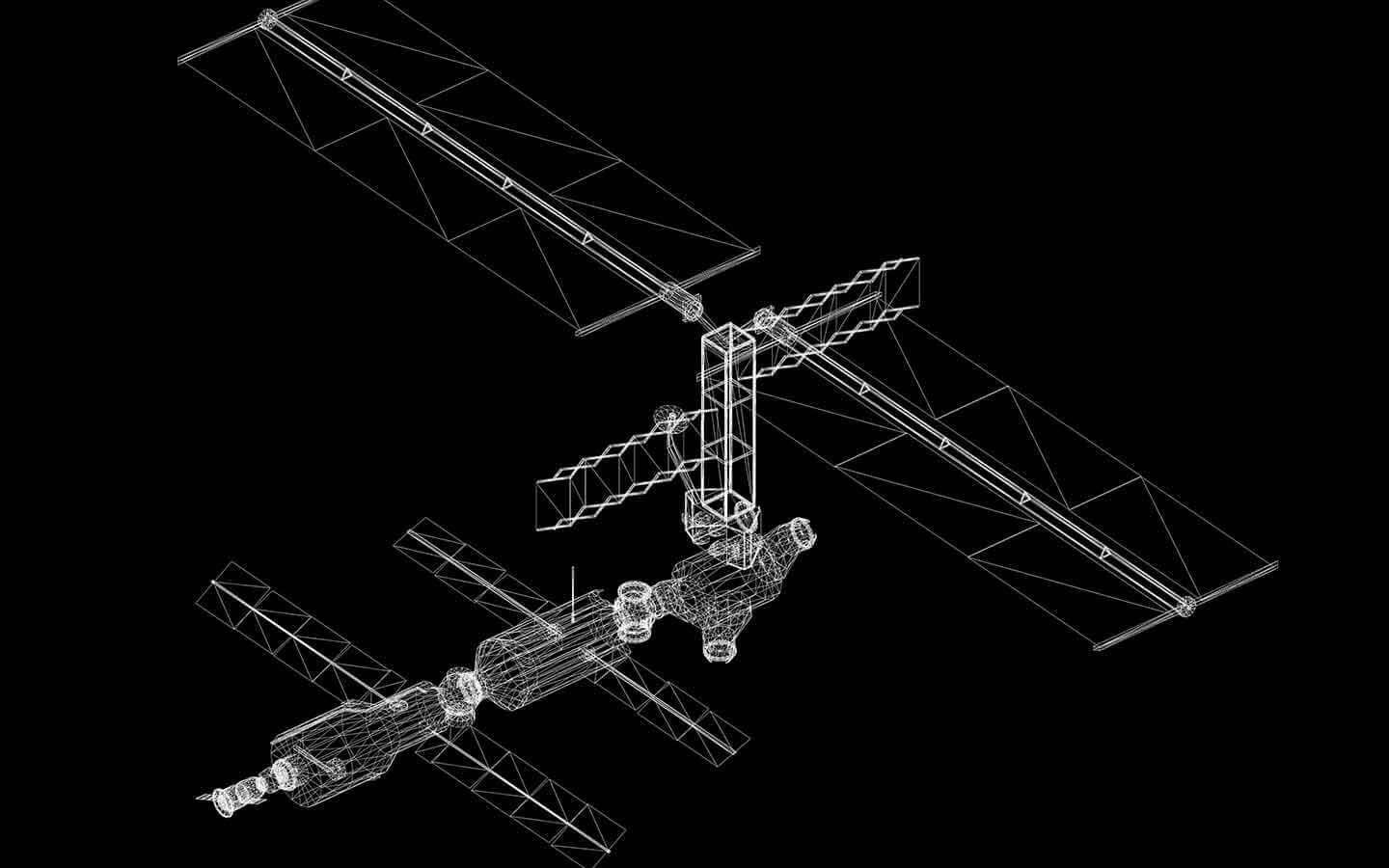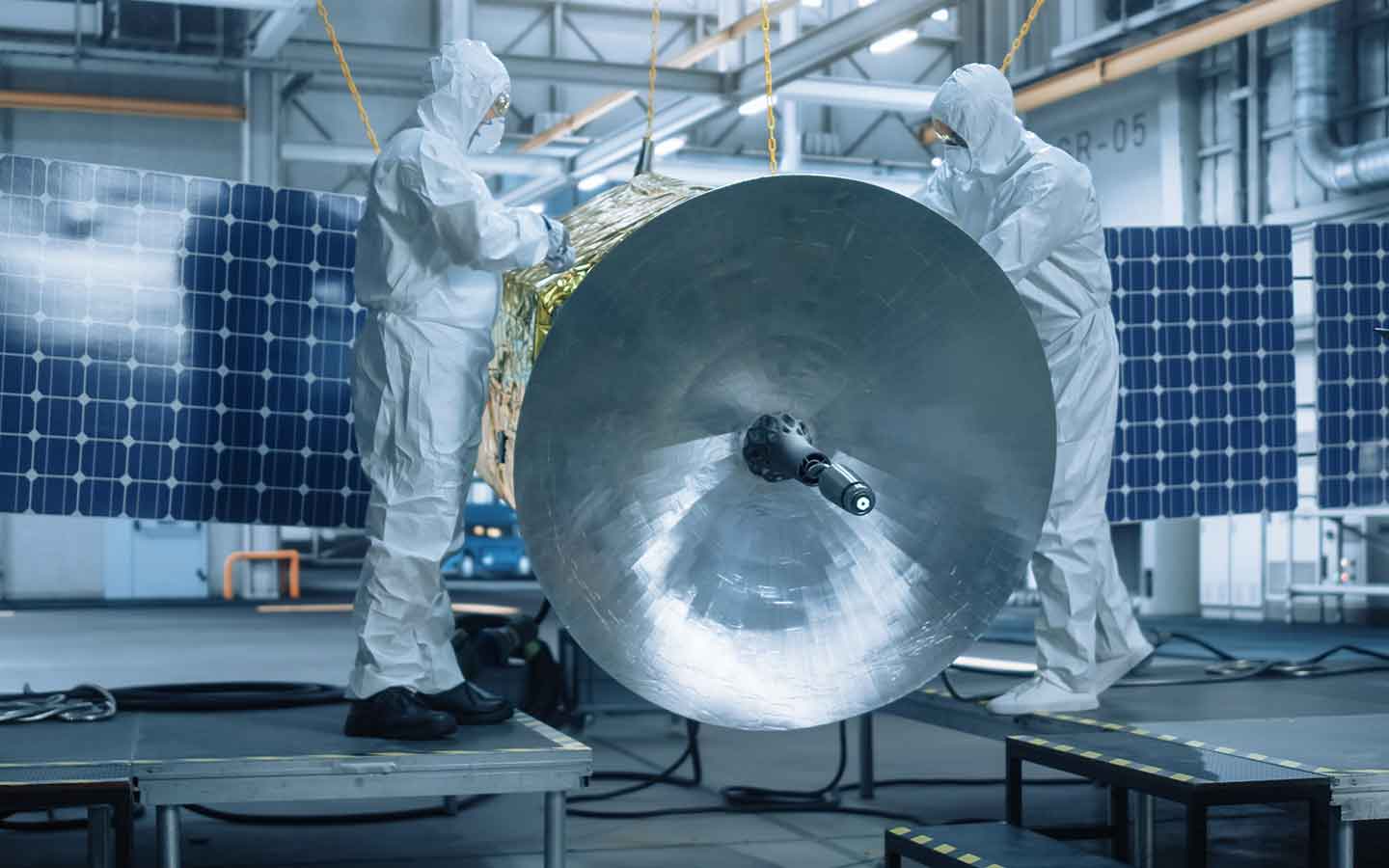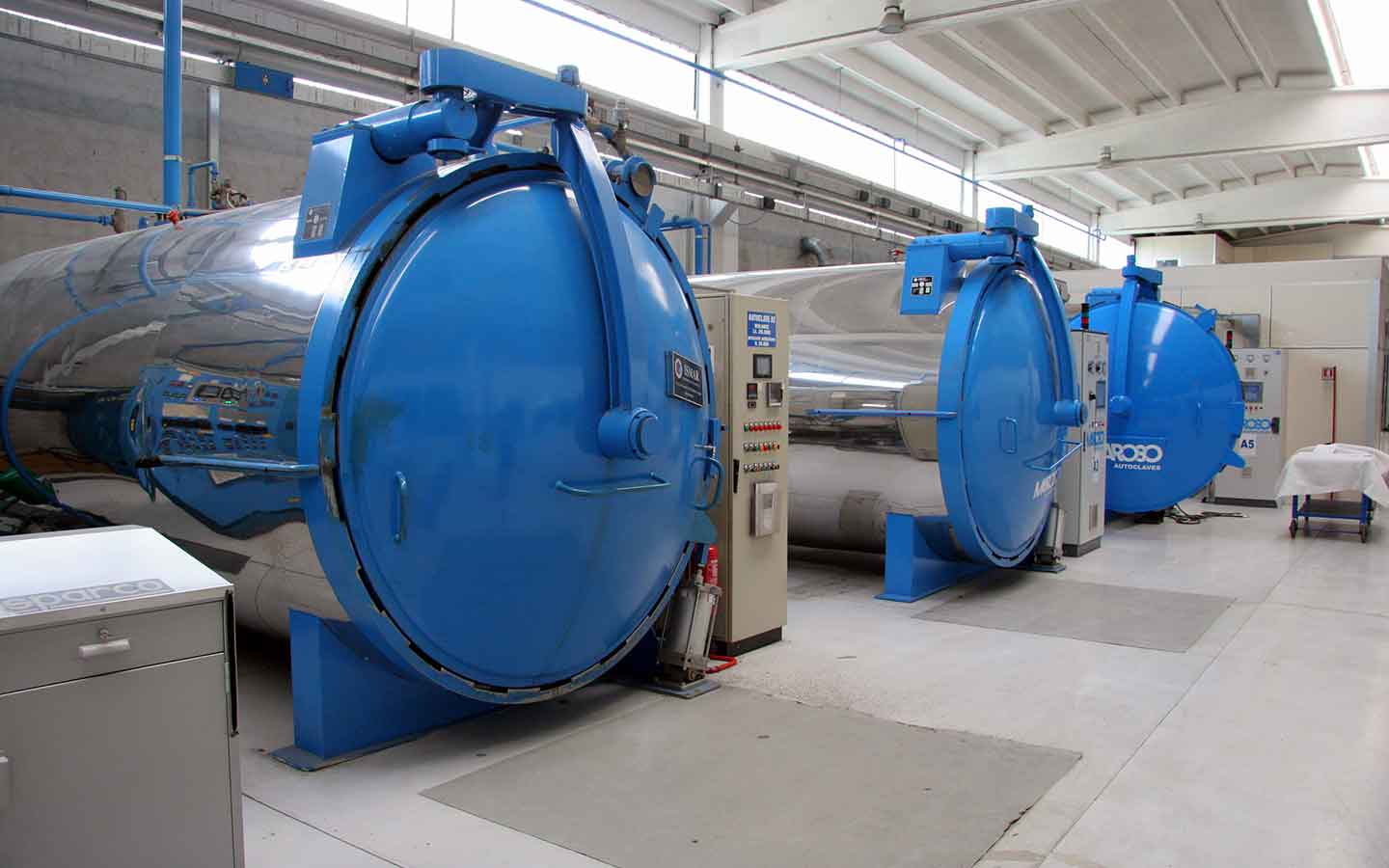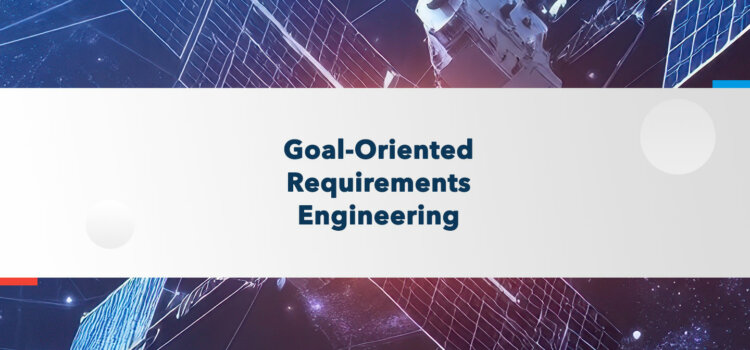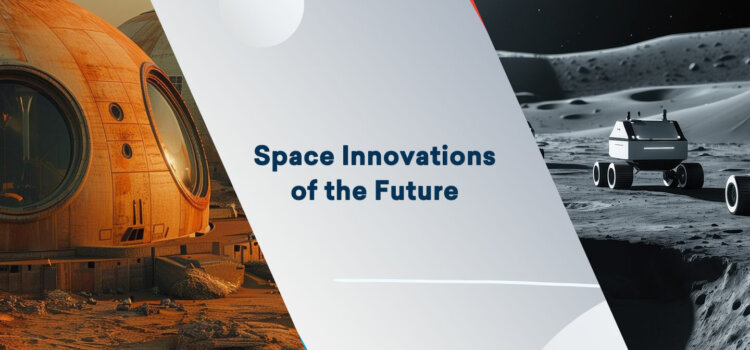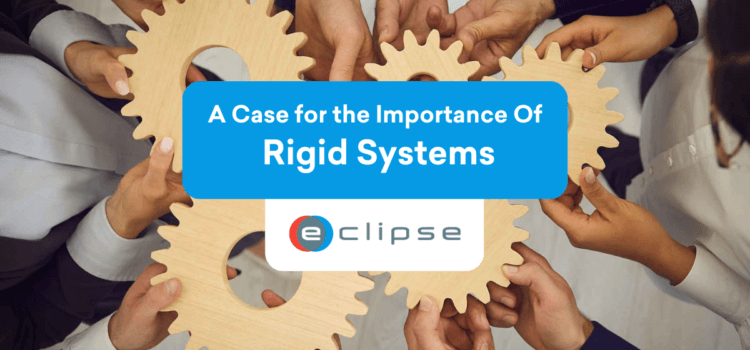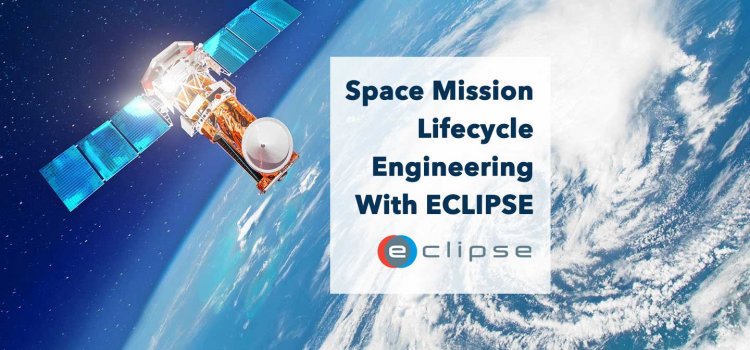
Space Project Lifecycle: Management with the ECLIPSE Suite
25 Nov, 2024
Whether it is a new satellite, rocket, or ground control system, the development of space projects goes through several phases. In this article, we discuss the whole space project life cycle and how ECLIPSE Software Suite contributes to the management of this complex project.
The Space Project Lifecycle
Space projects are large in cost, time, and personnel involved. Development can take years or even decades. Because such a long timeframe is needed to develop the spacecraft, there’s usually a high level of uncertainty about whether its mission will succeed.
From the early start, it is crucial to keep track of all the documents produced, such as requirements specifications, design documents, test plans, and everything else created during the development process.
Keeping track of all these documents and their status is crucial for any space project. The problem is, it’s almost impossible to keep track of absolutely everything. The ECLIPSE Software Suite fixes this problem and gives you complete traceability of your document, actions, requirements, non-conformances and risks.
Working with ECSS standards
ECSS Space standards are the European standards for space projects. Various companies space agencies recognise them as the standards needed to work in the space industry. There function to ensure high quality and interoperability between European space products. The standards cover many areas, such as requirements definition and engineering processes.
The ECLIPSE Software Suite is a collection of tools that work together to increase the efficiency of projects and make them ECSS compliant. Next to this, it provides benefits for every step in the development process of space projects. These include easier sharing of information, tracking the status of documents and their changes, generating reports, reviewing and comparing documents, and communicating with partners (e.g. prime contractors and subcontractors).
The essence of the ECLIPSE Software Suite is that every step is documented and made traceable throughout the entire development process. Furthermore, the tool is constantly evolving, and we can adjust them to your organisation’s requirements if needed.
Phases of a space project lifecycle
Working on a space project requires organising teams, requirements, activities, milestones, margins, and dependencies. The project manager or program manager must create a project plan to deal with the complexity of scheduling all these activities and ensure a successful product within a specified time and budget.
The ECSS is a standard designed to guide the construction of successful space initiatives. To get a better understanding of a Space Project Lifecycle, we have divided the lifecycle into the following seven stages:
- Mission creation
- Proposal sharing
- Start of mission lifecycle
- Defining requirements
- Detailed definition
- Production and qualification testing
- Launch and in-orbit operation
To give you an idea of the ECLIPSE Software Suite, we overview each phase and how the ECLIPSE Software Suite assists you. However, Space projects might differ in the exact sequence of these phases.

1) Mission creation stage
Creating a space mission (whether deep space or orbital) begins with the mission concept stage; this stage can also be seen as the idea stage and includes the conceptualisation of the idea. People engage in think tanks and brainstorming sessions to discuss ideas. The main question that needs answering is how to help our stakeholders achieve their goals? Techniques you could use to answer these questions are:
- Visualisation
- Storyboards creation
- Divergent and coherent thinking
- Brainwriting
- Brainswarming
- Visioning
- Brain Dump
The meetings might result in several mission concepts, one of which will be selected. Considering several criteria such as safety, dependability, affordability, and the capacity to satisfy stakeholders will help establish a mission concept. Questions that may need answering for each idea are:
- What are the motivations for this idea?
- What problems do we solve with this idea?
- What scientific questions are we going to answer with this mission?
- Who are the potential users of the scientific data produced by this mission?
- What instruments would be needed, and do they already exist?
- Is science already at this level? Is the project feasible?
These questions can help guide the mission creation stage, but it is important to note that the answers to these questions don’t have to be specific. They can also use modelling to clarify what is possible and what is not.
At the end of this stage, scientists and engineers gather to determine if the concept is feasible. Scientists and engineers will work together to create a final mission concept design. In this document, scientists report that the science exists, and the engineers roughly estimate what is required, how much it will cost, and how long it would take to make.
2) Proposal sharing stage
After creating the initial mission concept, it is shared with the ESA board to get feedback approval of the idea. The mission concept is still under discussion between different divisions within ESA and other space agencies to ensure no feasibility problems. The proposal process starts to finalise the mission concept.
Approval through the ESA council
Approval of the project is done on the ESA council level before the project can go into its next phase. The ESA council level comprises all Member States, Associate Partner states, and the Cooperating States. The council reviews the proposal to ensure that the mission is feasible, has high value for money and is better than competing proposals.
The decision-making capacity also lies with foreign states that decide if they want to be a part of the mission. The actual parties within the council that will vote will depend on the mission and mission interests. Consensus between cooperating ESA Members and the stakeholders is needed to start the project.
An essential part of this stage is creating an understanding for the stakeholders. The mission needs to interest the member states, scientists, engineers, and industry stakeholders. The parties will attend confidential presentations to ask questions about the proposal. Once there is an agreement that the project meets the requirements for engagement from the board, it can move on to the next stage.
3) Start of mission lifecycle stage
The start of the mission lifecycle is a time of uncertainty, joy, and hard work. The appointed team will thoroughly analyse the mission on feasibility and explore options to complete the mission.
Many of the analyses and decisions made during this stage are essential to managing costs; therefore, this stage needs careful attention. Changes in later stages will have a significant impact on the risk management and cost of the project.
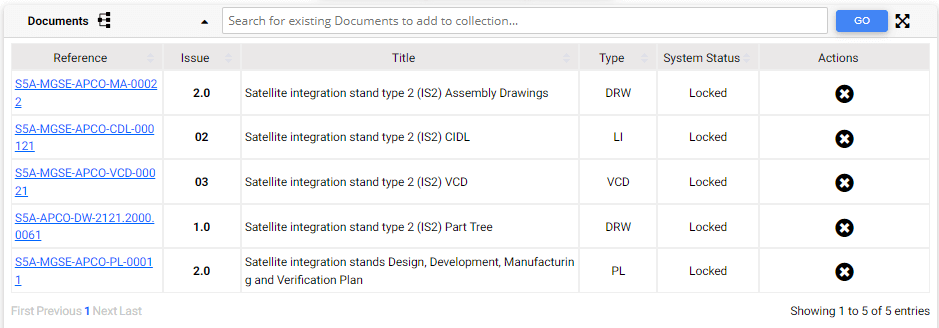
DCCM: During this stage, management of documents and actions are within the ECLIPSE Software Suite
Phase 0: Mission analysis and needs identification
First, the space project will go into the mission analysis and needs identification phase. In other words, there is an analysis of the requirements to make the mission successful.
A team of analysts, configuration managers, scientists, engineers, and developers work in space project teams to determine the overall mission’s specifications. The team will share documents such as:
- Related historical missions and their specifications
- Potential concepts for the spacecraft
A gathering of rough estimates, designs, and requirements will help define the strategy to complete the mission.

AIM: The team’s specific actions are sent out through the AIM module.
Spacecraft performance
This phase also includes the identification of expected spacecraft performance. The team will define what the spacecraft will need to do.
Documents needed are:
- Expected space conditions
- Expected requirements
- Potential designs
- Potential configurations
The team may use key performance parameters (KPP) to define spacecraft concepts. The KPP’s represent the key system capabilities the spacecraft needs. KPP’s can be on structure, propulsion, thermal control and power generation (Solar arrays and Batteries), communication, and attitude determination and control.
The team can also use technology readiness levels to determine the maturity of technologies, subsystems, or components that need to be available for a given phase.
eRISK: the eRISK module helps manage the different risks each concept carries.
Analysis of resources and constraints
They also analyse the resources, such as budget, time frame, team members, etc., needed to accomplish the mission. The constraints include environmental, time, material, personnel and others,
Documents are shared such as:
- Conditions required for space segment and ground station operations
- Work breakdown structure
- Action lists
- Resource allocation matrix
eRISK: is used to communicate the specific risks involved with the project. The material doesn’t exist, what alternatives do we have, and how high are their risks?
Mission Definition Review (MDR)
The mission definition review (or mission design review) is the first major milestone in the space project lifecycle. It is an in-depth review of all activities completed during Phase 0, and includes the following tasks:
- Progress made to date
- Status of the mission analysis paper
- Necessary changes to approach
- Feedback on resources needed
- Spacecraft’s performance needs
- Risks involved
The mission definition review is the end of phase 0, and it forms the base of the project. The review is the primary communication point, so this phase is essential to get everyone on the same page.
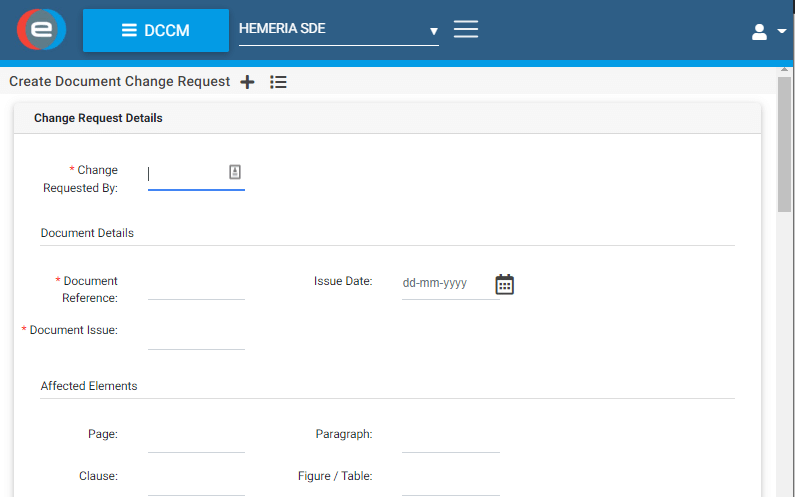
DCCM: Documentation of the analysis is performed within the DCCM module.

eRID: Reviewing the analysis by all involved stakeholders is done in the eRID module.
Phase A study: Defining mission function and what it will achieve
After analysing phase A starts. In phase A, the team conducts a detailed study of the mission function and its objectives. These includes:
- Study of possible mission scenarios, orbital calculations and trajectories
- Analysis of potential risks and enhancement of mission concepts
- Analysis of how the mission perception by society
- Definition of target orbits, including orbit determination
The team investigates and analyses potential mission scenarios to determine their feasibility. The study also goes through the risks and limitations and lists the possible obstacles.
Exploring system concepts
Out of the analysis in phase 0, several system concepts are selected and further refined. The team looks at the spacecraft capabilities and how their utilisation.This is when the true meaning of the technologies and subsystems becomes apparent.
Documents shared include:
- Mission functional architecture
- Spacecraft hardware design
- Expected spacecraft performance
The team will determine the spacecraft design and how the design will complete the mission. Coordination and integration options with other projects, spacecraft, and instruments are explored.
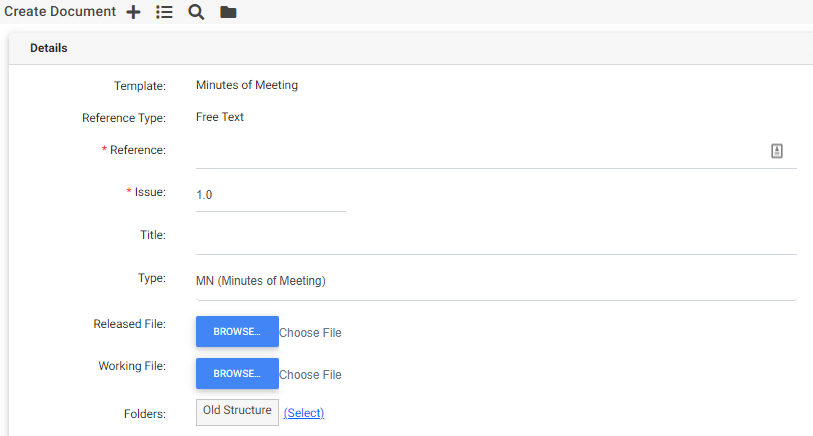
DCCM: The DCCM module shares the specific documents from the different system concepts.
Preliminary Requirements Review (PRR)
Completing phase 0 and phase A is signalled by the preliminary requirements review. The review finalised the mission requirements, performance analysis, and mission function.
A key meeting will take place to assess if the mission is on track, and if not, what needs to change. The preliminary requirements review will determine if the project is feasible enough and if the mission is solid enough to proceed. The goal of the review is to prove concerns are raised.
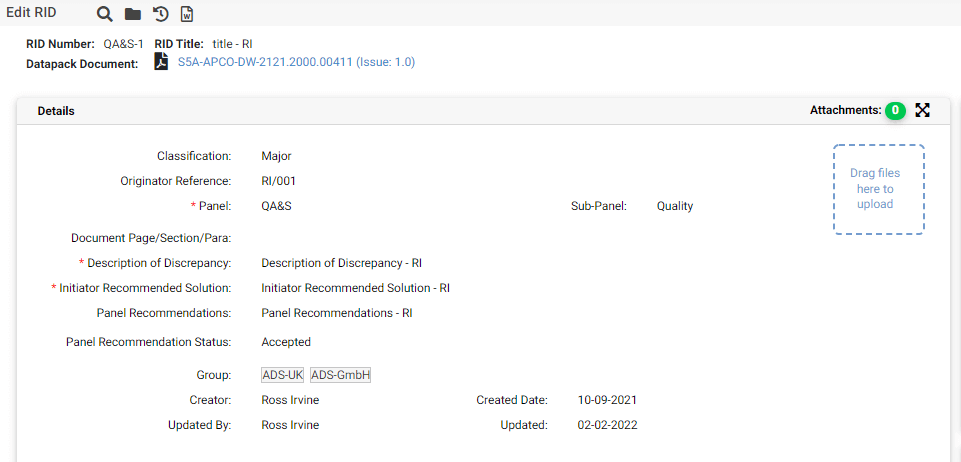
eRID: reviewing if the requirements are met within the mission is done with the eRID Module

AIM: Actions are created if the mission function is unclear yet.

4) Defining requirements
From phase B the best solution has been determined to complete the project’s objective. The next stage is to define the specific technical requirements for this solution. Specific requirements may be
- Material X needs to handle Y degrees.
- Orbit will be on X level to achieve Y
- Processors will be X to measure Y
- Prime contract X will work on Y
In other words, exact performance levels, schedules, costs, teams, designs, and technical requirements are defined.
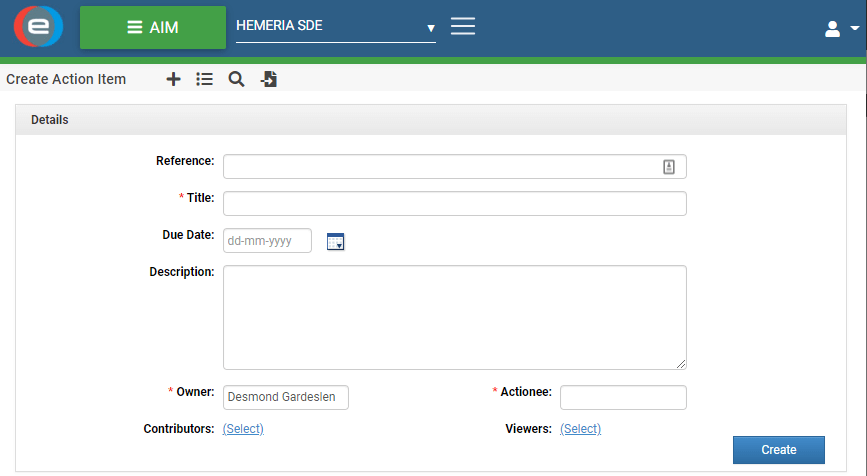
AIM: the AIM module communicates actions, comments, and documents related to the requirements.
System Requirements Review (SRR)
After all the essential criteria are established, it’s time to choose between making or buying alternatives. Next, it is determined if new solutions are used, or existing ones are improved.
In other words, the system requirements review is the point where all requirements and specifications are drawn up, and the actual mission requirements are finalised.
eRID: The eRID module is used to review if the milestone
Preliminary Design Review (PDR)
At this point, a preliminary design review is conducted. This includes an overview of what has been done thus far. The design of the spacecraft is assessed and modifications are made if necessary.
The PDR occurs when the project managers determine if the spacecraft design is sound enough to continue. The PDR includes an overview of the solution to complete the mission and what resources are needed.
eRID: The ECLIPSE module eRID is used again to review if the milestone of the project is completed.
5) Detailed definition
After the Preliminary Review, Phase C starts. Phase C is writing the detailed definition of the project and testing its components. Here the preliminary take design defines every system and component in the space project.
Defining elements of how the team will build the spacecraft include the interfaces between all systems and components. The team must complete all drawings and documents needed for manufacturing, assembly, and testing.
The breakdown
Each spacecraft component is looked at to determine what will be required to make it. The breakdown helps to create the actions to get each component in place.
It’s critical to have accurate specifications. The team can use drawings to include all of the system’s components, documents on how they make them, and how they work together. It is necessary to show all manufacturing steps and how subsystems fit into the spacecraft.
Planning validation
During the planning validation, detailed plans and procedures are made to test individual components, subsystems, and the complete spacecraft.
Qualify components for space
Components will test for their ability to withstand the conditions in space successfully. Critical components are tested under extreme temperature, vibration, shock, and radiation for a long duration to ensure they can survive their expected lifetime.
Critical Design Review (CDR)
This review is the finalisation of the spacecraft’s manufacturing requirements. This evaluation verifies that the system can go into the manufacturing stage. The review will show that all expected criteria are fulfilled and determine what modifications will be required if problems arise during manufacturing or assembly.
eRID, DCCM, and AIM: When requirements need changing because the material does not pass the requirements, change control can be done through ECLIPSE.
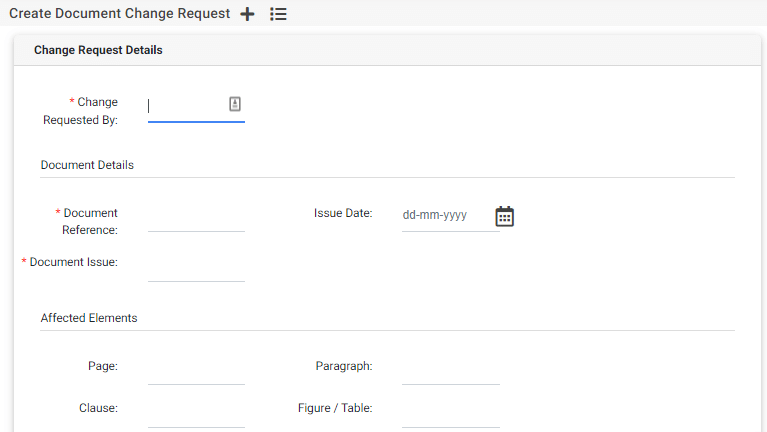
6) Production and qualification testing
After the critical design review, the manufacturing starts, and testing of the complete spacecraft build begins. The stage starts by building and testing each component, subsystem, and finally, the entire spacecraft.
The spacecraft is tested several times at this stage to ensure it meets all requirements before proceeding to the next stage in production or qualification testing.
Phase D: production and qualification testing
Before building the whole spacecraft, in Phase D the team will do the production and qualification testing of the components. To ensure that all components conform to the required specifications, they are made and checked against their requirements. Any part that does not meet the previously established requirements needs a change. Change may be necessary because of a wrong design, material wrong, or human error. Change control procedures help to manage changes within a complex project.
Check the operational performance of components
The spacecraft’s operational performance is evaluated in a simulated space environment. The spacecraft goes through a series of tests that determine its performance in the unique conditions.
Testing includes:
- Thermal vacuum testing: simulates the extreme cold and heat of space
- Shock testing: simulates the impact of debris or a meteor
- Vibration testing: simulates the movement of the spacecraft while in orbit
- Radiation testing: simulates the radiation levels in space
Measure margin’s
The required margin’s that the spacecraft components need to be able to withstand are measured. The margin is the difference between the minimum and maximum requirements. They will ensure that the spacecraft can continue to function correctly in space, even in unexpected environmental conditions. Two of these margins are:
- The safety margin is the amount of extra space built into a system or component to ensure that it will still function even if something goes wrong. This margin allows for errors or unexpected problems during manufacturing or assembly.
- The performance margin is the amount of extra performance built into a system or component to ensure that it meets all the requirements. This margin allows for fluctuations in the environment or unforeseen problems.
Every component, subsystem, and spacecraft has its margins, which allow for errors during manufacturing, assembly or the mission itself.

AIM: AIM supports the management of tests on all sorts of components, subsystems, and spacecraft.
Acceptance Review (AR)
Components that meet all the requirements are approved for use in the spacecraft through the acceptance review. This review ensures everything was tested and is ready for assembly. Parts that do not pass inspection or tests are sent back to be changed or re-produced before being tested again.
eRID: System requirements are tracked and reviewed within the eRID module.
AIM: This module will assist in the creation of new actions to deal with the non-conformances
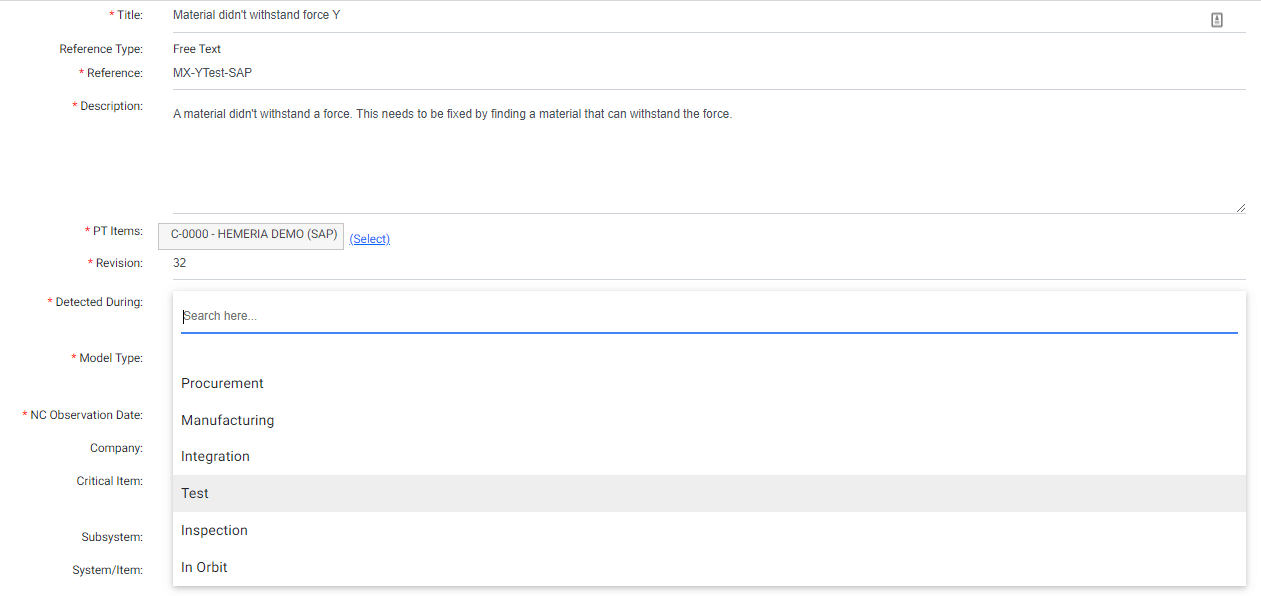
eNCTS: The non-conformances are captured in NCTS and can be reviewed quickly.

7) Launch and in-orbit operation
The spacecraft has been accepted as complete and is ready for launch. The liftoff of a spacecraft can be an exciting time full of anticipation and nerves. After the rocket leaves the earth’s atmosphere, the payload is released and is now operational.
Launch Readiness Review (LRR)
Prior to launch, there are a number of activities that must take place in order to ensure a successful mission. These activities are known as the Launch Readiness Review (LRR). The purpose of the LRR is to verify that all systems are ready for launch and that all preparations have been completed. In addition, the team will verify all procedures and plans for launch day itself. This review is conducted by the spacecraft’s project team, as well as representatives from the launch provider and other interested parties.
Phase E: Utilisation
The final phase is the utilisation phase, where the spacecraft is operational. Many factors affect how well a spacecraft performs. The environment in space, radiation, collisions with objects, or other spacecraft all play a role in how well the spacecraft functions over time.
More testing and validation
The team continues to monitor the spacecraft during the operational phase. There are tests on all subsystems and components to make sure they still meet the requirements.
eNCTS: Non-conformances are captured if the requirements are not met.
AIM: If components do not meet expectations or standards, a new action is created to account for the non-conformance.
Performing as expected
The spacecraft is now ready to perform the mission. Missions can be short-term or long-term, from weeks to years. Throughout the mission, the team will watch the spacecraft and its components for any changes in or departures from predicted behaviour. Ground control manages the spacecraft and uses it to complete the mission.
AIM: The AIM module manages the actions to perform certain tasks, tests and inspections on the spacecraft.
End-of-Life Review (ELR)
The End-of-Life Review (ELR) is an important process that is conducted to verify that a mission has completed its useful operation or service. The review also ensures that all on-orbit elements are configured to allow safe disposal. In order to complete the ELR process, a variety of data must be collected and analyzed. This includes information about the status of the mission, the condition of the spacecraft, and the environmental effects caused by the spacecraft.
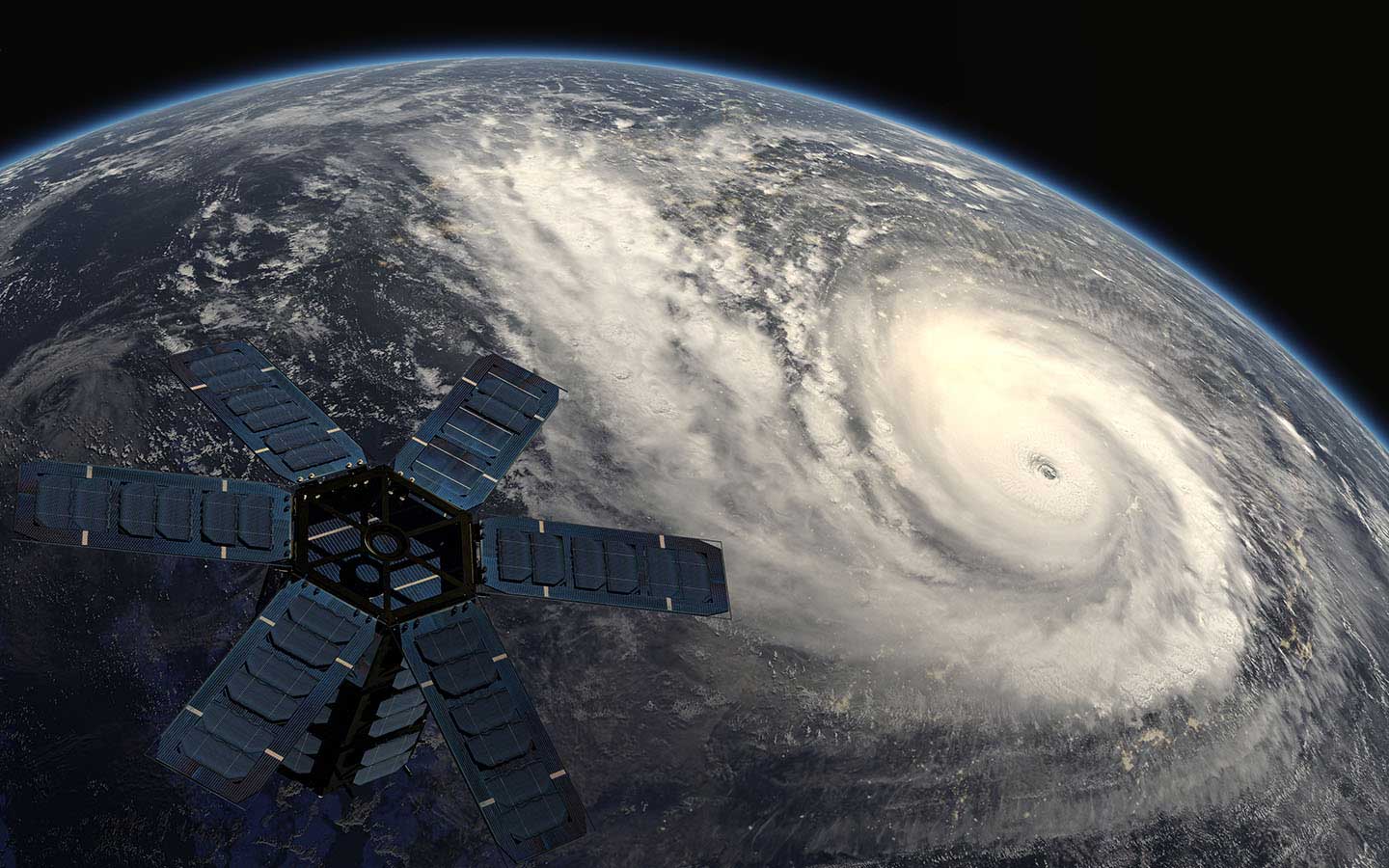
Space Project Management with ECLIPSE
Space projects are complex by nature, so it is crucial to have a tool that can help you through all project phases, from initial concept to operations. ECLIPSE provides easy ways to store documents, do reviews, create actions, and manage your overall project. If you are looking for a tool to get you through the space project life cycle, contact us. Our team of professionals will be eager to find the right solution for you.
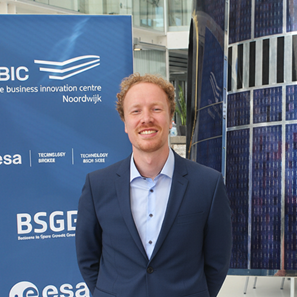
Desmond Gardeslen
Product Marketing Manager
Passionate about the intersection of space technology, marketing, business, engineering, and innovation.




